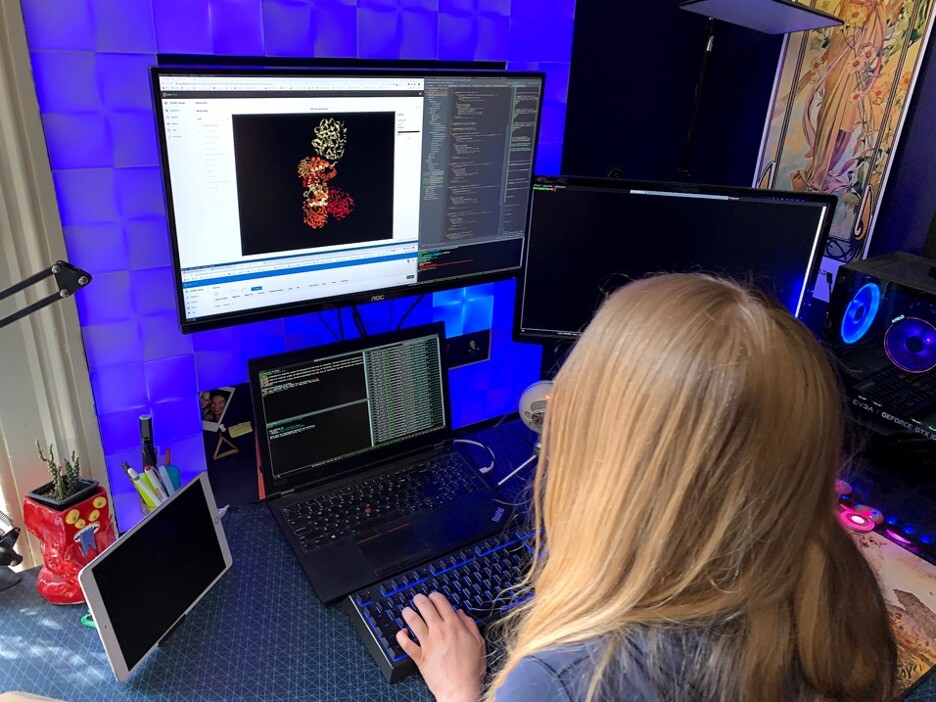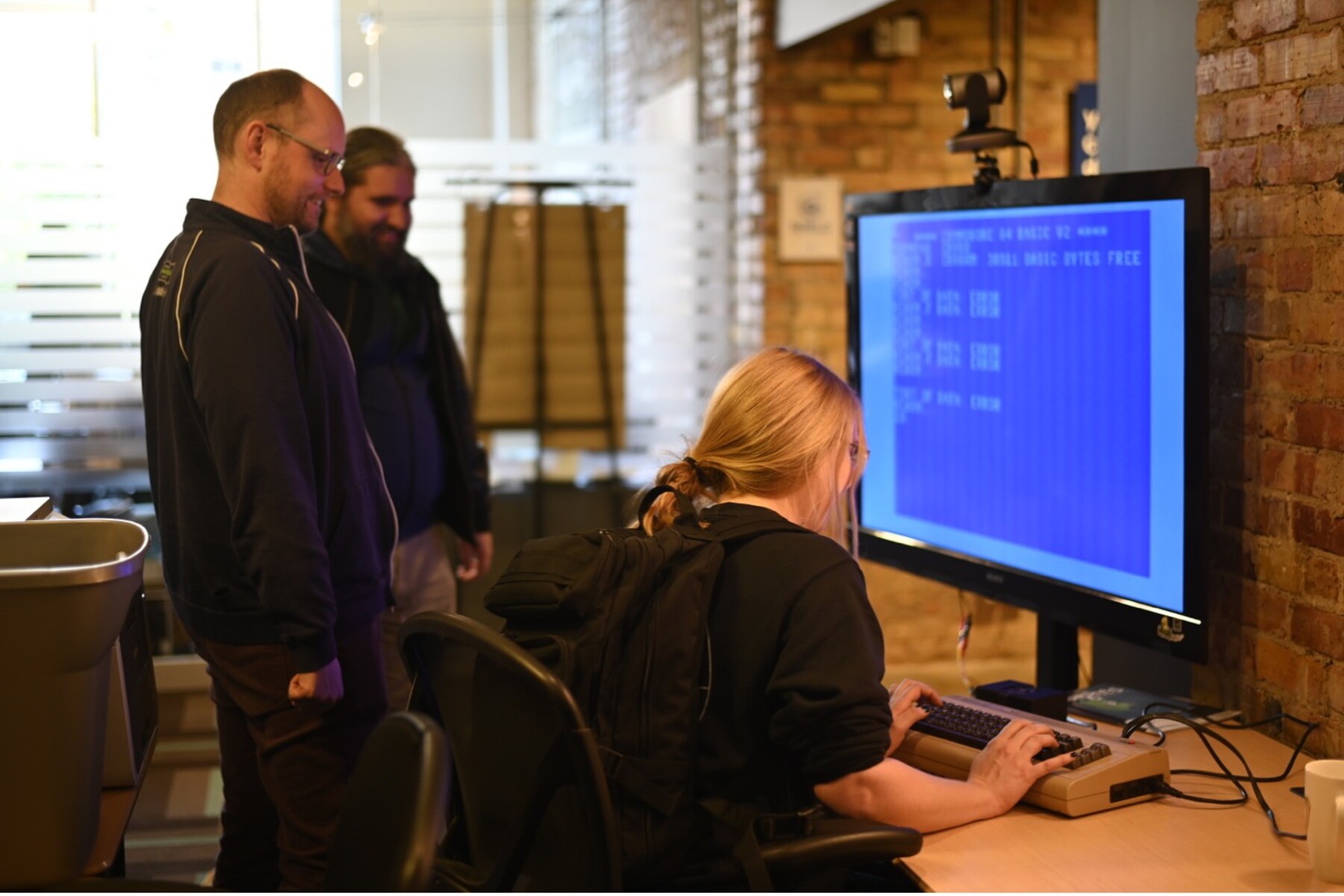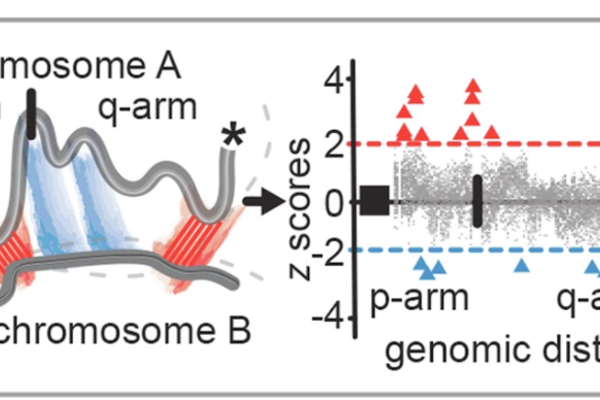Industry Insights: Get to Know Heather Ward from DNAstack

Heather Ward is the bioinformatics lead at DNAstack; a Toronto-based start-up improving human health by breaking down barriers to responsible global data sharing, discovery, and analysis by developing standards and software to accelerate breakthroughs in genetic research and precision medicine.
Heather holds two master’s degrees, one in evolutionary genetics (Western University; 2015-2017) and one in bioinformatics (University of Guelph; 2017-2018). Prior to grad school, she obtained a B.Sc. in Biochemistry from the University of Waterloo (2015). Competition in the job market factored into Heather’s decision to pursue graduate studies: “When I was graduating, I kind of knew that I didn’t want to go straight to the job market, mostly because I was a little bit nervous that there were so many people graduating with the same [bachelor of science] degree.” She noted her thought process after completing her first masters in evolutionary genetics: “In my first masters, I did a fair amount of data analysis, and it was mostly in Excel, and I had a little bit of experience previously with Python and some amount of programming, but not a ton.” After completing her master’s thesis in the wet lab, Heather sought to accelerate the speed at which she could explore genetic questions, which drove her to pursue bioinformatics: “I went into bioinformatics because I was excited to look at how much data there is available and immediately be able to use that analyse it and form insights without having to spend years doing the ‘dirty work’ to make the data.” She described the bioinformatics master’s program at Guelph to be an ‘8-month crash course’ on the command line, UNIX, and working with software tools like version control.
DNAstack’s software suite enables scientists and health leaders to find, access, and analyze the growing volumes of genomic and biomedical data, to diagnose and treat complex and rare conditions more efficiently more effectively. This technology makes it easy for research consortiums, patient advocacy groups, hospitals, pharmaceutical companies, and governments to share and analyze their data, empowering collaborative discovery in the genomics space. The company hires mainly software developers, which means for bioinformatician Heather Ward, she is especially valuable: “I am one of the few scientists who works [at DNAstack], and I’m basically here to just show what our software does, [which is to] enable data sharing more readily across organizations and geographic boundaries, and ensure data access agreements are not misunderstood and data is not passing between partners when it shouldn’t be.” As a bioinformatician at DNAstack, Heather helps foster a global community of precision medicine research initiatives by increasing access to distributed health data, shared via the company’s integrated software suite. With the start-up being so quick to pivot its efforts towards viral surveillance, DNAstack (founded in 2014) gained serious notoriety near the beginning of the COVID-19 pandemic.
On April 21, 2020, Canadian Prime Minister Justin Trudeau named the company a key Canadian innovator supported by Canada’s ‘Digital Technology Supercluster’ in the fight against COVID-19. He said the following in his press briefing, “Toronto’s DNAstack is developing a new cloud-based network that allows researchers who are looking to improve our ability to diagnose and treat COVID-19 to share their findings.” Ward recalls the company’s fast response to COVID: “We were uniquely set up to use our existing infrastructure, which we had typically used for sharing human genomics data, public health data, and also federated private data.” Heather continued, “I think the reason we were recognized as an innovator so quickly is because we were able to really quickly pivot our focus on human health genomic data to COVID genomic data.” She emphasized the large scale of the COVID-19 surveillance software: “I think when we ran out of cloud credits, we had analyzed over 1 million SARS-CoV-2 genomes.” DNAstack launched the Viral AI network on February 9, 2022, to provide a tool that could support the global pandemic response for COVID-19 and beyond. It represents the first federated network for genomic variant surveillance, enabling distributed data to be discovered, searched, and analyzed alongside other data to empower virologists and epidemiologists in their analyses.
The autism sharing initiative (ASI) is another big data project led by DNAstack. It is a large collaboration between industry leaders, which brings together the largest collection of autism data in the world, powering new insights and supporting personalized approaches to care. Like much of Heather’s work within DNAstack, her involvement with the autism sharing initiative is very data-focused: “for things like autism spectrum disorder, where it’s really hard to find underlying genetic markers in a way that makes sense and is meaningful in terms of clinical outcomes, having all these different individual effort across labs and across countries available to be combined and analyzed jointly, I think is really powerful for pulling out very small weak effects.” Autism spectrum disorder (ASD) has a complex genetic etiology, meaning that many variations across the human genome have been identified to result in ASD when present in combination. Since the advent of genome-wide association studies (often called GWAS for short), increasingly detailed genetic data has become available, allowing a deeper understanding of rare or complex conditions. DNAstack is involved in other areas of genomics research as well, such as precision oncology and rare diseases.
For Heather, a typical workday at DNAstack includes working with clients such as hospitals, universities, and biotech start-ups to develop bioinformatic workflows. While each client has different specific needs, they all share a similar end goal; to produce an analysis workflow for biological data that is reproducible, scalable, and able to run in the cloud. Bioinformatic workflows streamline the analysis of raw genetic sequencing data. Workflows often involve a series of software algorithms which process sequence data for more streamlined analysis. Before developing her bioinformatic workflows, Heather performs a preliminary literature review, especially when faced with biological data types she has less experience working with: “Whether it’s a type of data I’ve seen before or not, I’ll go and look at the current literature about that kind of data analysis, and I’ll try and identify some tools that I think would be good. I will make a package of what the [bioinformatic] workflow should look like, and I’ll structure a kind of framework diagram of the different steps.” Oftentimes, Heather is tasked with juggling multiple projects at once.

For anyone interested in getting started in bioinformatics, Heather recommends finding mentorship figures, seeking out internship opportunities at different companies, and using online tools to hone your skills: “There’s a lot of bioinformatics committees online, like on Reddit and Discord, where you can go and get involved.” When interviewing for a bioinformatics position, she recommends having example code from previous work, understanding how tools such as structural variant callers work, and studying the algorithms behind aligners such as BWA-mem. Additionally, knowing version control or having contributed to an open source bioinformatic tool can make you stand out in the interview.
University of Toronto Medical Genomics alumna Karen Fang works alongside Heather Ward as a bioinformatician at DNAstack. Checkout Karen’s Capstones to Careers feature to learn more about how the M.H.Sc. Medical Genomics program helped her land this position! We are grateful for the opportunity to have gotten the inside scoop on all things DNAstack and bioinformatics, and wish Heather continued success with her projects in the space.


